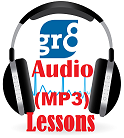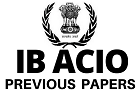sponsored links
Banking Awareness 2017 : Types of Banking
Retail Banking
It is also known as Consumer Banking. It is the provision of services by bank to individual consumers rather than to companies, corporations or other banks. Services offered include savings
and transactional accounts, mortgages, personal loans, debit cards and credit cards, car loans & home loans etc.
and transactional accounts, mortgages, personal loans, debit cards and credit cards, car loans & home loans etc.
Direct Banking
Direct Banking is Banking without any branch network that offers its services remotely via online banking and telephone banking and may also provide access via ATMs.
Virtual Banking
A virtual bank offers some or all types of accounts and services that traditional bricks and mortar banks do, but virtual banks exist only online (only over the internet).
Online Banking
It is an electric payment system that enables customers of a financial institution to conduct financial transactions on a website operated by the institution, such as retail bank, virtual bank.
Green Banking
It means promoting environment-friendly practices and reducing carbon footprint from your banking activities.
Mobile Banking
It is a term used to refer to systems that allow customers of a financial institution to conduct a number of transactions through a mobile device such as mobile phone or tablet.
Mobile banking differs from mobile payments which involve the use of a mobile device to pay for goods or services either at the point of sale (POS) or remotely.
SMS Banking
SMS Banking is a type of mobile banking, a technology enabled service offering from banks to its customers, permitting them to operate selected banking services over their mobile phones using SMS Messaging.
SMS Banking services are operated using both push and pull messages. Push messages are those that the bank chooses to send out a customer's mobile phone. Type of push message is One Time Password (OTP). OTPs are the latest tool used by financial & banking service providers in the fight against cyber fraud. Pull messages are those that are initiated by the customers, using a mobile phone for obtaining information or performing a transaction in the bank account.
Telephone Banking
It is a service provided by a bank or other financial institution that enables customers to perform a range of financial transactions over the telephone, without the need to visit a bank branch or ATM.
It includes obtaining account balances & list of latest transactions, electric bill payments & fund transfers between customer's or another's accounts.
Transactions involving cash or documents are not able to be handled using telephone banking.
Core Banking
It is a banking service provided by a group of networked bank branches where customers may access their bank account & perform basic transactions from any of the member branch offices.
Offshore Banking
It means dealing in Foreign Exchange.
Narrow Banking
It is called safe banking. It involves mobilizing a larger amount of the deposits in Risk free assets as govt. securities. Its main objective is to reduce NPA (Non Performing Assets) of the banks. In order to get solutions of problems of high NPA and related matters Indian Banks partially implemented the narrow banking with the view of Tarapore Committee on Capital Account convertibility.
Kiosk Banking
For Financial Inclusion, Kiosk Banking plays an important role in banking industry. It is boon for people where banking facilities are not available. Like an ordinary bank branch, Kiosks offer all basic services of banking as cash deposit, withdrawals and Remittances. A customer can request for opening a new bank account with Kiosk banking retailers.
Note : Maximum limit of Deposit or remit amount is Rs. 10,000 per day through Kiosk branch (internet enabled).
That's all for now friends. In our next Banking Awareness lesson, we shall learn about the Types of Bank Accounts. Good Day :)
- Read Lesson 1 from Here
- Read Lesson 2 from Here
- Read Lesson 3 from Here
- Read Lesson 4 from Here
- Read Lesson 5 from Here
- Read Lesson 6 from Here
- Read Lesson 7 from Here
sponsored links










 English Vocabulary from
English Vocabulary from












0 Responses:
Post a Comment